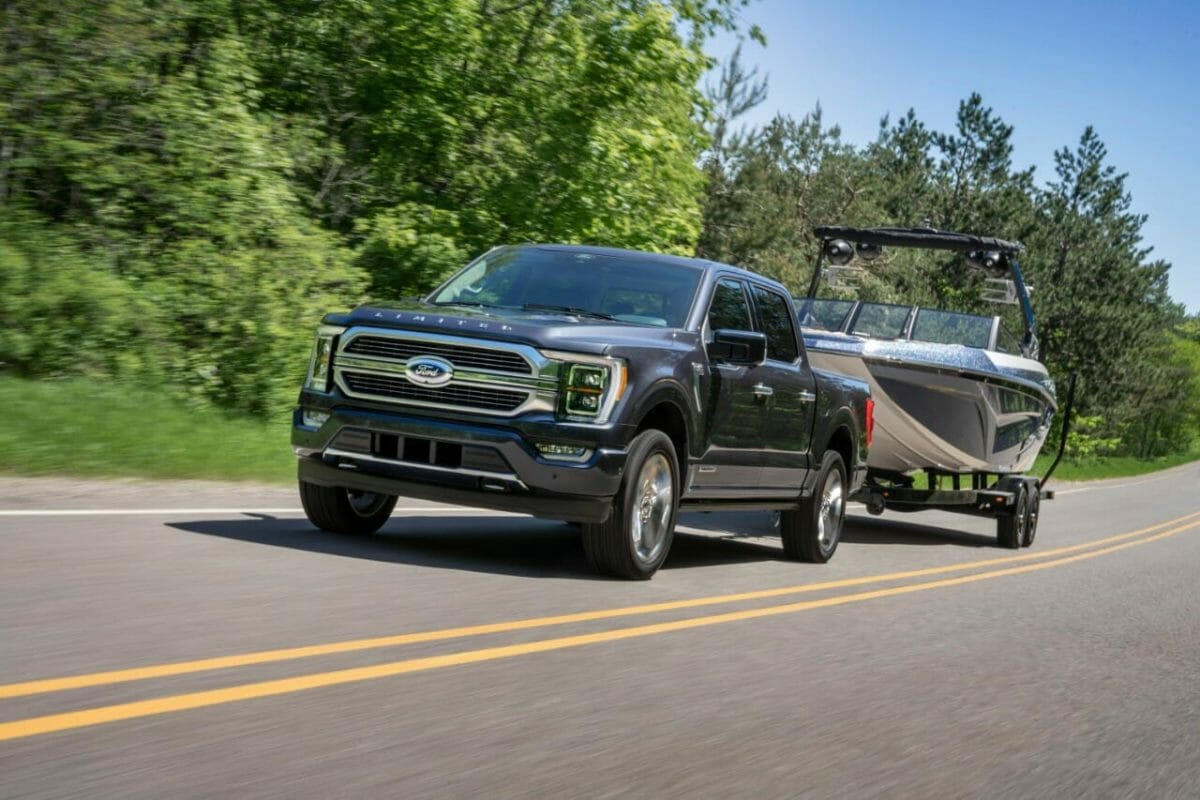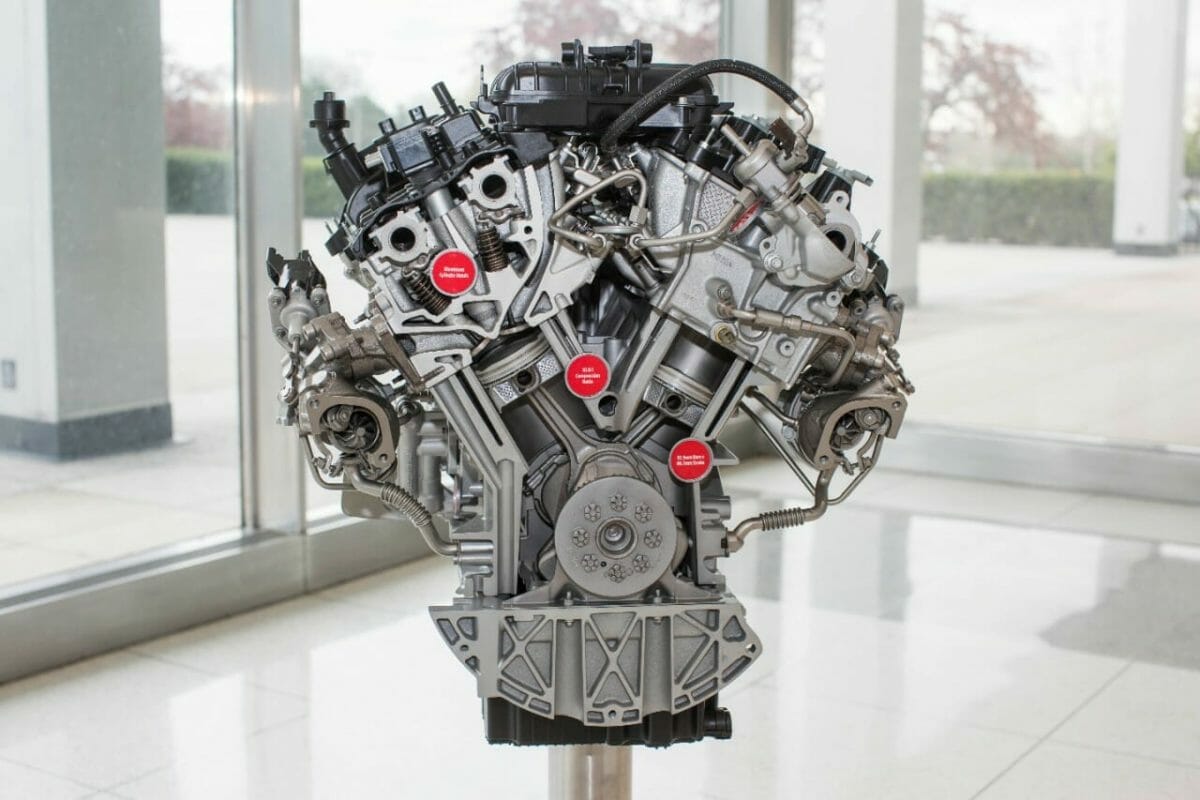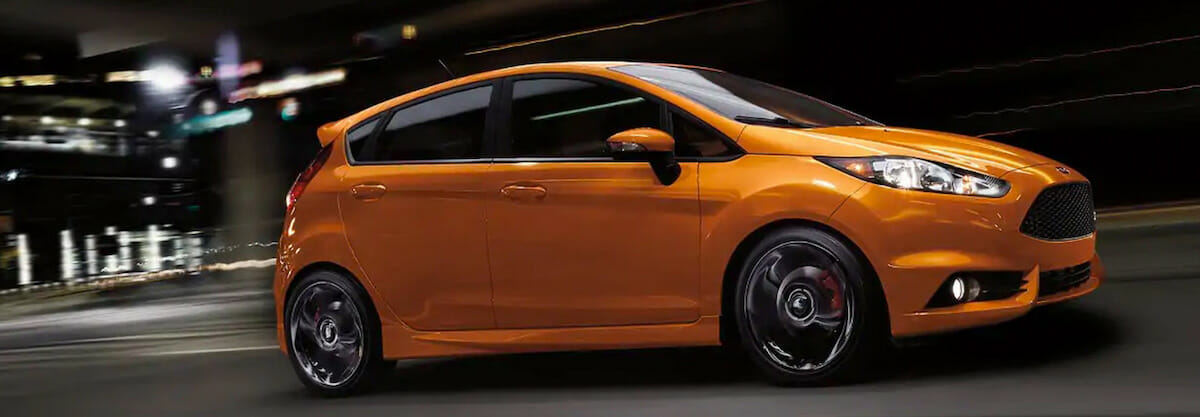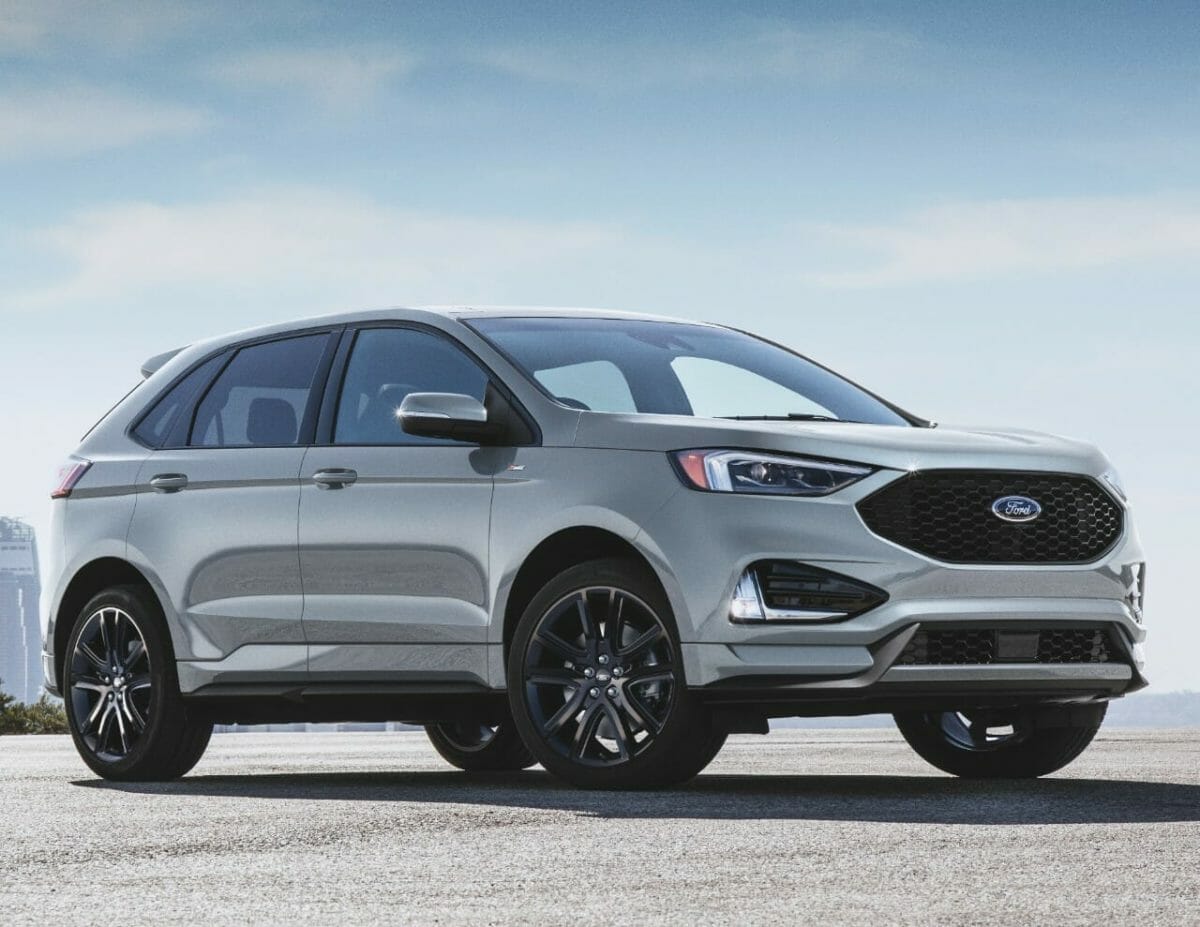Ford’s turbocharged EcoBoost engines offer the perfect blend of power and efficiency. We take a closer look and review the specs, design, and reliability.

Ford began production of the EcoBoost engine lineup in 2009 in response to the growing demand for more fuel-efficient vehicles that didn’t sacrifice too much in terms of performance.
EcoBoost engines combine three technologies to accomplish this: turbocharging, direct fuel injection, and twin independent variable camshaft timing (Ti-VCT), which together maximize power and efficiency while also reducing emissions.
The first EcoBoost engine, a turbocharged 3.5L V6, launched for the 2010 Lincoln MKS. The engine then found its way over to the 2011 Ford F-150, where it literally changed the way most of the world saw a six-cylinder-powered pickup.
Over the years, many of Vehicle History‘s real-owner reviews have specifically pointed out the differences an EcoBoost engine makes. “My EcoSport has a 1.0L three-cylinder motor, and the ride is so smooth around turns and stops on a dime,” said one 2020 Ford EcoSport S Sport owner.
“I knew very little about the Ford EcoSport before purchasing it. Here’s what I know now: The car handles very well, has more space inside than you’d guess, and gets incredible gas mileage,” said another.
Ford’s EcoBoost lineup is arguably their most advanced gas-powered engines to date. As a result, EcoBoost technology has found its way into almost every Ford and Lincoln product now offered, eventually including smaller three, four, and six-cylinder engines.
Below we’ll cover each of these game-changing powertrains in detail, reviewing their history, specs, design, availability, and reliability.

EcoBoost Engine: Design Elements
Each EcoBoost engine includes several fuel-saving and performance-enhancing technologies, including forced air induction via turbocharging, high-pressure direct fuel injection, and variable cam timing.
Turbocharging increases engine efficiency by supplying compressed fresh air to the combustion chambers through a centrifugal air compressor, which is powered by expanding exhaust gases. Both the in-line three and in-line four-cylinder EcoBoost engines have one turbocharger, while V6 engines have two.
Direct injection involves spraying fuel directly into the engine combustion chamber. One of the advantages of direct injection over traditional port injection is that when fuel is sprayed into the combustion chamber, it does not vaporize in the intake manifold or stick to the walls of the intake ports. By injecting fuel into the combustion chamber it avoids an additional step of getting fuel to the engine, which makes the combustion process more efficient.
Some EcoBoost engines also include port injection in addition to direct injection for additional power and efficiency benefits.
EcoBoost engines use a twin-independent variable cam timing (Ti-VCT) to adjust the timing of both the intake camshaft and the exhaust camshaft.
However, the version of the 3.5L V6 that is not featured in the F-150 uses intake phase shifting to control the intake camshaft. Optimizing engine timing results in more power and reduced emissions.
Other important design elements to note are the high compression ratios (10:1) programmed for most of the EcoBoost lineup (everything except the 2.0L and 2.3L displacements).
In addition, the turbochargers are mounted to, or integrated with, the exhaust manifolds and sit close to the combustion chambers. Because of the higher compression ratio and the placement of the turbochargers, turbo lag is virtually nonexistent.
Thanks to these modern technologies, EcoBoost engines are 20 to 30 percent more fuel-efficient and create approximately 15 percent lower emissions compared to naturally aspirated, larger displacement engines.
Initially, Ford EcoBoost engine technology was integrated into the automaker’s existing in-line four and V6 Duratec engines. Eventually, Ford developed new engines specifically designed and built around EcoBoost technology.
Ford moved quickly to expand the EcoBoost engine lineup thanks to its initial success. As noted previously, the first EcoBoost engine offered was a V6. EcoBoost now includes in-line three and in-line four-cylinder engines, and several V6 engines.

Three-cylinder EcoBoost Engines
There are two in-line three-cylinder engine options currently offered by Ford: a 1.0L and 1.5L. The 1.0L EcoBoost creates a maximum of 125 horsepower and 170 lb.-ft. of torque.
The engine was found in the now discontinued (in North America) Ford Fiesta and is currently found in the Ford EcoSport. Interestingly, the small 1.0-liter engine was updated in 2017 to include cylinder-deactivation for further efficiency optimization, a global first for a three-cylinder.
What do Ford’s engineers have to say about cylinder deactivation?
“With the variable capacity delivered by cylinder deactivation, drivers get the power and performance of the whole engine when they need it, and the enhanced fuel efficiency of a smaller engine when they don’t,” said Denis Gorman, powertrain engineer, Ford of Europe.
“Our research shows that in most driving scenarios the system will be active for just a few seconds at a time, making fast and seamless operation crucial, and has the potential to improve fuel efficiency by up to 6 percent.”
“Cylinder deactivation adjusts the effective engine capacity to maximize fuel efficiency, and to deliver the greatest benefit to customers, needs to be triggered in as many driving scenarios as possible,” said Carsten Weber, manager, Powertrain Research & Advanced Engineering, Ford of Europe.
“We intensively tested the system in real-world conditions using a range of deactivation strategies to develop a system that maximizes the fuel efficiency without compromising driving comfort.”
The larger, 1.5L EcoBoost engine is an evolution of the 1.0L engine. The 1.5L engine produces a maximum of 197 horsepower and 214 lb-ft. of torque. In addition to its turbocharger and variable cam timing, the engine features cylinder deactivation and uses not only direct injection but also port injection. The 1.5L engine is used in the current-generation Ford Escape.

Four-cylinder EcoBoost Engines
Moving to Ford’s four-cylinder engine offerings, the EcoBoost displacements include a 1.5L, 1.6L, 2.0L, and 2.3L.
The 1.5L in-line four-cylinder (not to be confused with the three-cylinder engine) EcoBoost engine was created based on the slightly larger 1.6L EcoBoost engine as a result of global vehicle tax regulations.
However, the 1.5L engine does feature unique design elements including an integrated exhaust manifold and a computer-controlled water pump clutch. The engine produces a maximum of 181 horsepower and 185 lb.-ft. of torque. This engine is found in older generations of Ford Fusion and Ford Escape.
A slightly larger 1.6L EcoBoost engine was produced by Ford before the 1.5L engine. The engine creates a maximum of 197 horsepower and 199 lb.-ft. of torque. The engine has an open-deck design and is made from high-strength, low-weight aluminum alloy. This engine is found in older generations of Ford Fusion, Transit Connect, Fiesta ST, and Escape.
Ford’s 2.0L engine was the first-in-line four-cylinder engine the automaker offered with EcoBoost technology. The first-generation (2010-2018) 2.0L EcoBoost engine produces a maximum of 200 horsepower and 221 lb.-ft. of torque. The second-generation (2015-present) creates a maximum of 252 horsepower and 270 lb.-ft. of torque.
The second-generation 2.0L engine uses a higher compression ratio and a twin-scroll turbocharger for higher low-end torque capabilities. The 2.0L engine is found in many current and past generation Ford and Lincoln models, including the Ford Edge, Escape, Explorer, Focus ST, Fusion, Taurus, Lincoln Corsair, MKZ, MKC, and Nautilus.
The larger 2.3L EcoBoost engine is directly related to the 2.0L EcoBoost engine. Both engines feature identical bore sizes and deck heights. Minor variations to the engine’s crankshaft design distinguish the engine from the smaller 2.0L.
The 2.3L engine became the first four-cylinder EcoBoost engine to be used in rear-wheel-drive applications. The engine puts out a maximum of 350 horsepower and 350 lb.-ft. of torque. This engine is found in several Ford and Lincoln models, including the Ford Explorer, Focus RS, Mustang, Ranger, Lincoln Corsair, and MKC.

Six-cylinder EcoBoost Engines
The six-cylinder lineup of EcoBoost engines is Ford’s largest and most powerful application of EcoBoost technology. There are three displacements of six-cylinder EcoBoost engines currently available, including a 2.7L, 3.0L, and 3.5L.
The 2.7L EcoBoost engine produces a maximum of 335 horsepower and 400 lb.-ft. of torque. First introduced on the Ford F-150, the first-generation 2.7L engine uses aluminum cylinder heads, integrated water-cooled exhaust manifolds, and twin-turbochargers.
The second-generation 2.7L engine received several updates, including the addition of port injection, lightweight camshaft, and a stronger dual-chain drive system. This engine is found in several Ford and Lincoln models including the Ford Edge, F-150, Fusion, Lincoln Continental, MKX, and Nautilus.
A larger 3.0L EcoBoost engine, derived from the 2.7L EcoBoost engine, was introduced exclusively for the Lincoln Continental before finding its way into other Ford and Lincoln products. This engine is the first EcoBoost engine that Ford has electrified for the Lincoln Aviator Grand Touring plug-in hybrid model.
Capable of producing a maximum of 494 horsepower and 630 lb.-ft. of torque (with the hybrid powertrain), the 3.0L engine features increased bore spacing and a longer stroke over the 2.7L engine.
It also uses an aluminum block instead of granite iron to save weight and improve strength. Other Ford and Lincoln models to use the 3.0-liter EcoBoost engine include the Ford Explorer and Lincoln MKZ.
Last but certainly not least, the 3.5L EcoBoost engine. As Ford’s original EcoBoost engine, it is the automaker’s most tried and true, and flexible example of EcoBoost technology.
Derived from Ford’s Duratec 3.5L V6, the engine receives twin-turbochargers on top of the Duratec engine’s direct injection and twin independent variable cam timing.
The second-generation 3.5L EcoBoost engine adds port injection and electronically actuated wastegates for the turbochargers. In addition, the camshaft drive system uses a dual-chain cam drive design for increased durability. Applications of this engine broadly vary from luxury-focused Lincolns to Ford’s GT supercar.
Maximum power between both generations of the 3.5L EcoBoost engine ranges from 380 to 647 horsepower and between 460 and 550 lb.-ft. of torque. This engine is found in many Ford and Lincoln models, including the Ford Explorer, Expedition, Flex, F-150, GT, Police Interceptor Utility and Sedan, Taurus, Transit, Lincoln MKS, MKT, and Navigator.

EcoBoost Engines: Are They Reliable?
With the additional moving parts added to make an EcoBoost engine, concerns over reliability are valid, but Ford has worked extensively to reinforce engine durability.
For example, Ford engineers conducted millions of hours of computer analysis, thousands of hours of dyno testing, and hundreds of thousands of hours of vehicle testing, which included testing at maximum power in extremely high and extremely cold temperatures, to get the EcoBoost engine just right.
Additionally, Ford engineers designed EcoBoost engines with a failure mode that is triggered if the engine beings to overheat.
In failure mode, the engine’s internal computer will set cooling fans on high and shut down cylinders to cool the engine and protect the cylinder heads. The vehicle will only be able to idle until the overheating code is cleared from the engine’s computer.
Despite the torture testing and preventative measures instituted by Ford, EcoBoost engines have not gone completely problem-free.
The 1.6L in-line four-cylinder EcoBoost has reported overheating issues, which triggered Ford to recall almost 100,000 vehicles due to the risk of engine damage and potential engine fire. Ford’s fix for this problem includes an update to the engine-management software that addresses situations when there is a loss of coolant pressure.
Additional problems that have been reported related to EcoBoost engines involve carbon build on the backside of the engines intake valves due to the use of direct injection, which can cause the engine to misfire or experience rough idle, and experience a loss of power when accelerating.
Despite these reported issues, organizations like J.D. Power still rank Ford and Lincoln products using EcoBoost technology highly in terms of quality and reliability. The issues noted above remain relatively isolated to engines produced in the mid-2010s.
Ford continues to develop and refine its EcoBoost technology to ensure durability and longevity. The benefits of more power and better fuel efficiency make EcoBoost engines both fun and functional in their applications across the Ford and Lincoln lineups, proving to the world it might be a worthy replacement to displacement.
Photos: Ford
